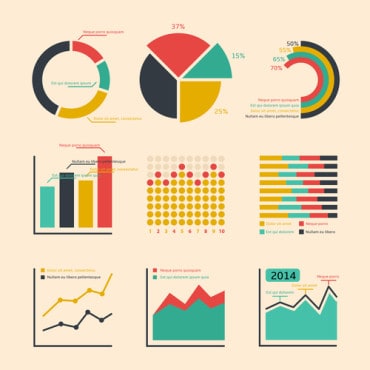
A discussion of how Software AG and Amazon Web Services (AWS) are working together to simplify matters when organization attempt to deploy and scale large IoT projects.
Commercial, industrial, and medical equipment manufacturers are poised to reap the benefits of connected products thanks to IoT. However, many face challenges with their IoT efforts in that they do not deliver desired outcomes or scale well.
RTInsights recently sat down with Ricky Singh, VP of IoT Americas at Software AG, and Bill Podrasky, Senior Manager, IoT Go-to-Market for North America at Amazon Web Services (AWS), to talk about these issues, what’s needed to overcome them, and the benefits that can be realized when such companies have a scalable solution that combines a robust IoT platform with resilience cloud services.
Here is a lightly edited summary of our conversation.
RTInsights: Why is there so much interest in developing and building Industrial IoT solutions today?
Ricky Singh: The thing that’s changed and why so many organizations are interested in IoT today is that the solutions are really starting to deliver outcomes and results for a lot of companies. I often think of a very simple equation in my mind, and that is where the value of data that you receive from a connected thing exceeds the cost of collecting that data.
Connected devices have been around far longer than the word IoT has been. Companies like Boeing have been connecting aircraft engines for decades. That’s because these assets were worth millions of dollars. So, even if it cost a couple of hundred thousand dollars to get those data streams, that equation made sense for Boeing.
What we’re starting to see for many other organizations is that the cost equation now makes sense. The cost of computing and sensors has been drastically reduced with the introduction and adoption of the smartphone. The cost of connectivity has been drastically reduced by cellular networks and other options like LoRaWAN being ubiquitous. Also, the ease of integration with ready-to-deploy platforms in cloud infrastructure like the offerings from AWS means that the equation has evolved to benefit a lot of customers where it wouldn’t have before.
Bill Podrasky: If a company is doing any type of digital transformation, modernization, or data strategy that involves IoT, you have to get the data from the devices to execute those strategies.
Another aspect of lower costs is that the cost of cloud computing has come down with the cost of sensors connecting at the edge. That is driving more companies to the cloud and to then leverage IoT as part of their overall business strategies.
RTInsights: What problems do many organizations have after they’ve deployed a solution?
Bill Podrasky: The challenge we often hear with IoT is about being able to get out of proof of concept and get to deployment. That is a challenge that companies still have. However, that challenge is made easier when you think about working with companies like Software AG that help minimize the challenges of putting a solution out and then scaling it. Some companies have trouble setting expectations about how to move from a proof of concept or proof of value into production. They need to have metrics and KPIs, and they must make sure that senior management understands what that journey is going to look like.
There is a bit of expectation-setting along the way. What we see at AWS is there is tremendous value in doing this, and this is the reason why the investments and the number of companies driving IoT are increasing. So, while there are challenges, and there are challenges with every type of implementation, by setting expectations and having a clear view of what your outcome is and how you get to that outcome, everyone is clear where the success is and how you get there.
Ricky Singh: There are a couple of issues that organizations experience after they have deployed a solution.
The first is that their expectations of what they wanted the solution to do going into the project turned out not to be what they actually needed. Some of those learnings don’t come until after they have a solution in place.
We don’t want our customers to experience paralysis by analysis. We want organizations to understand which data is effective and what business outcomes it’s driving and then have the agility to adapt and learn from those things. But what you have a very hard time doing is going back and changing the foundation.
If you’ve ever been to New York City and you see these skyscrapers, there are multi-billion-dollar skyscrapers out there. They are residential buildings that have been put up, and after they get to the 60th story, they realize, oh well, the building is swaying, and the elevators make noise.
But at that point, it becomes very difficult to deconstruct that tower and reinforce the foundation.
That stays true for IoT as well. It becomes very difficult to go back and rebuild the foundation. So even if organizations are starting off with a hundred, five hundred, a thousand devices to prove the business outcomes they’re looking for, they need to design for scale from that first device. It’s not going to be something that you can go back and do.
The second thing is it is a process as much as technology. A business might have all this data that’s incredibly impactful for organizations but still runs the rest of the business the same way it has always run it. There is still going to be that rep that engages with the customer in the way that we always have. The process needs to be looked at again to make use of the data that we’re collecting from our connected endpoints.
And the last thing that Bill alluded to a little bit is change management. Change management isn’t just something you do in the beginning part of a project. It’s something that you have to continue doing with the variety of stakeholders that are engaged in an IoT deployment. You need to think about how it impacts your service teams, your product teams, and your leadership teams, and go back to it every few months to make sure they understand the benefits that IoT is delivering. And you need to continue messaging your customers, informing them why this changes things for them in the way that you interact with them.
RTInsights: Can you talk about some use cases? How are organizations monetizing Industrial IoT?
Ricky Singh: Probably the part of my career that I find the most challenging is to try and tell people what IoT actually means. You could not have strung together three more vague words than the Internet of Things. And I think it’s purposefully vague because the Internet of Things enables a variety of different solutions. But for a long time, it’s been a technology looking for a problem as opposed to the other way around.
Let me talk about those problems as use cases that we can apply IoT to and the ones that we find fascinating.
There are a variety of different IoT use cases, including everything from connected healthcare to manufacturing on the shop floor. But where we tend to focus and shine is helping makers of industrial, commercial, and medical equipment connect that equipment and start to both optimize existing processes as well as think about new revenue streams that are unlocked when you connect that equipment.
I’ll take the example of a medical device manufacturer. In the past, their use case was an as-is scenario. They sold a medical device or product to a healthcare provider or a hospital system. If something went wrong with that piece of equipment, they normally didn’t know about it until a customer picked up the phone and called them and said, “Hey, this machine is not working,” or “I can’t figure out what’s happening here.”
That created downtime. Many of us have been to a hospital or a patient appointment with a doctor but got turned away because we couldn’t get the test that we needed. When something like that happens, it deteriorates the patient outcome and experience. And the equipment manufacturer is also highly inefficient. They had to send somebody to that customer site and diagnose that piece of equipment. The technician may not have had the right parts or software with them. So, that person would leave and then come back again a week later. The whole situation created a lot of negativity between the equipment provider and the user of that equipment.
The use case that we started out with this customer was what would you do if your equipment had a voice? Now, if that equipment could tell you, here’s what’s wrong with me. I have the wrong firmware running, I don’t have adequate connectivity, or something has gone wrong with my configuration where I am about to go offline, or something’s about to go wrong.
Now, not only can you better service the equipment, but when that customer picks up the phone and calls you, you can say, “Hey, you know what?” We can tell them, “We already know something’s going on, and the next dispatch is going to be at your site tomorrow to change this one part that will fix this particular challenge that you’re having.”
That in itself is the kind of company that this provider wants to do business with. So, it started with how we can change if we have remote monitoring change our field service. But that also unlocks a variety of different abilities to service warranties and maintenance plans for the customer.
Another thing it did was work related to things like log files. Log file retrieval used to cost this company a lot. They used to do them on USB drives, and they’d get lost, or it was days or weeks before that log file ended up in front of the right product management team. With a connected product, the log files are instantly retrievable.
That example extends to a variety of different industrial and commercial manufacturers that make products that aren’t connected today. I often say makers of unconnected products are going to die. It’s going to be very difficult for them to survive in an environment where customers are expecting experiences that are data-driven and always on.
Bill, what are your thoughts?
Bill Podrasky: That’s a great example, and I would say hundreds of AWS customers are seeing those benefits. I would say that from an industrial perspective, the use case and what companies are looking for are operational efficiency in condition-based maintenance or management cost analysis of industrial equipment.
RTInsights: What’s needed for success, and specifically, how do Software AG and AWS help from a technical level? What synergies come from the two companies providing a joint offering?
Ricky Singh: What AWS has done for technology as a whole has been fascinating. They came up, like many of their other innovations, with something that served the Amazon and AWS businesses themselves back when cloud, as we’ve come to know, didn’t really exist at scale.
AWS said, “Hey, everyone’s focused on compute and storage, but why should people have to build data centers themselves?” After all, data is a key part of any organization. They started by producing or creating the cloud as we came to know it, but when they created that cloud, the software that existed wasn’t really designed with cloud-native abilities. You couldn’t just take your on-prem perpetual-style software licenses and then run them in the cloud. So, AWS created a variety of these AWS services, as they’re called, to help customers take advantage of the large-scale compute and cloud environment that they created.
This approach applies to companies looking at IoT solutions as well. The market has quickly evolved as technology continues to gather pace, and what we realized was many customers were rebuilding things that were required for IoT solutions over and over again. If your DNA as an industrial manufacturer was as a build organization, and you had the technology, skill sets, and know-how inside the organization to take those services and compose them in a way that worked for you, you picked them up, and you ran with them.
But the majority of customers we come across are not builders. They know their product well. They know their target market and their audience well. And ideally, they know the pain point that they’re looking to solve with this technology. They just need a way to get there quickly.
That’s where we can help. Software AG’s Cumulocity IoT Platform was designed in a cloud-native environment. I often remind our team and customers that the word Cumulocity comes from cumulus for cloud and -ocity for velocity. It helps you gain velocity for IoT deployments in the cloud. Working together, our customers achieve the best of both worlds. They get the scale, infrastructure, and AWS’s inherent know-how of the cloud market with a built-to-purpose IoT platform that greatly accelerates time to market for our customers looking to build smart, connected industrial products.
Bill Podrasky: At AWS, what we want to try to do is empower best-in-class companies, software, and platforms like Cumulocity by delivering operational resiliency. That means global reach, availability, high reliability, security, and compliance, making sure that there is breadth and depth of the services that a Cumulocity can consume so companies can continue to evolve. Software AG with Cumulocity’s platform would make sure that customers aren’t reinventing the wheel.
RTInsights: We talked about the benefits of a solution from both companies on the product and technical side. How do the two companies make it easy to conduct business and make the customer feel like they’re working with one company?
Bill Podrasky: It’s an extension of what we just talked about in that we want to ensure that Software AG is positioned to be the best it can be for customers and lets them engage with their value proposition, leveraging AWS as needed.
That applies to the services that they’ve built on top of this today and the other services they may need in the future. We are here for the long term. When Jeff Bezos and Andy Jassy started AWS, what was core to them was that we would always work backward from our customers and always look at the long term. And that’s how we view partnerships like Software AG and the Cumulocity Platform, which is truly best in class.
Ricky Singh: There are tangible parts of how we make it easier for customers. An example I can point to here is you can procure Cumulocity through AWS Marketplace. So that relieves and alleviates some of the contracting challenges that organizations may have if they’ve done business with AWS in the past and maybe haven’t done business with Software AG. We really think about how we can remove friction from the process so that we can focus on the outcomes that this IoT deployment can help our customers drive.
There’s also the intangible aspect of the two companies working together when you engage with us. It’s not an AWS team and a Software AG team. While you may have account teams on both sides, the project team that’s helping you on your IoT journey will primarily be fronted, for example, in this case, by Cumulocity thinking about the business outcomes that it’s going to help you drive, where the infrastructure is actually part of that foundation in the business or the building analogy that I used earlier.
Our job is to make sure the different teams that engage with customers are not hyper-focused on the technology of which AWS is a part. Rather, the approach is to start with what are the business use cases and what we need the solution to do to deliver outcomes. It is a matter of being customer-obsessed and then working back with the optimal solution that’s needed to deliver what the customer needs.





























